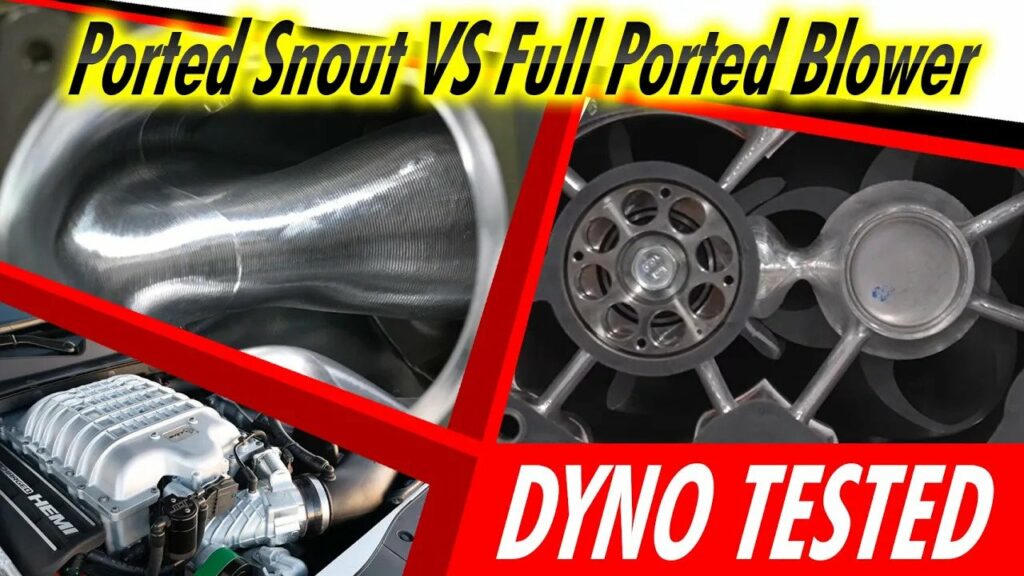Editorial | News : March 9, 2023
Today we've got something really cool for you (full video below). Nearly every day we get the same question about our stage 2 package for Hellcat models, what's better for pump gas only a ported snout with a stock untouched supercharger or a full port? This question is more loaded than it might seem at first sniff, as we've covered in other videos reducing inlet restriction on positive displacement superchargers almost always results in a considerable power increase. The theory is that by allowing the supercharger to draw air with less restriction this translates to an increase in power due to improved efficiency, but as we'll cover in this video that line does have a major caveat.
In short less restriction doesn't always translate to more airflow and in these cases it means you're spending money to lose power which obviously defeats the purpose. Now it's well accepted that full port on a Hellcat supercharger is reserved for Max effort setups, the thought is that gains only show up at higher boost levels, so this doesn't really apply to pump gas but is that really the case?
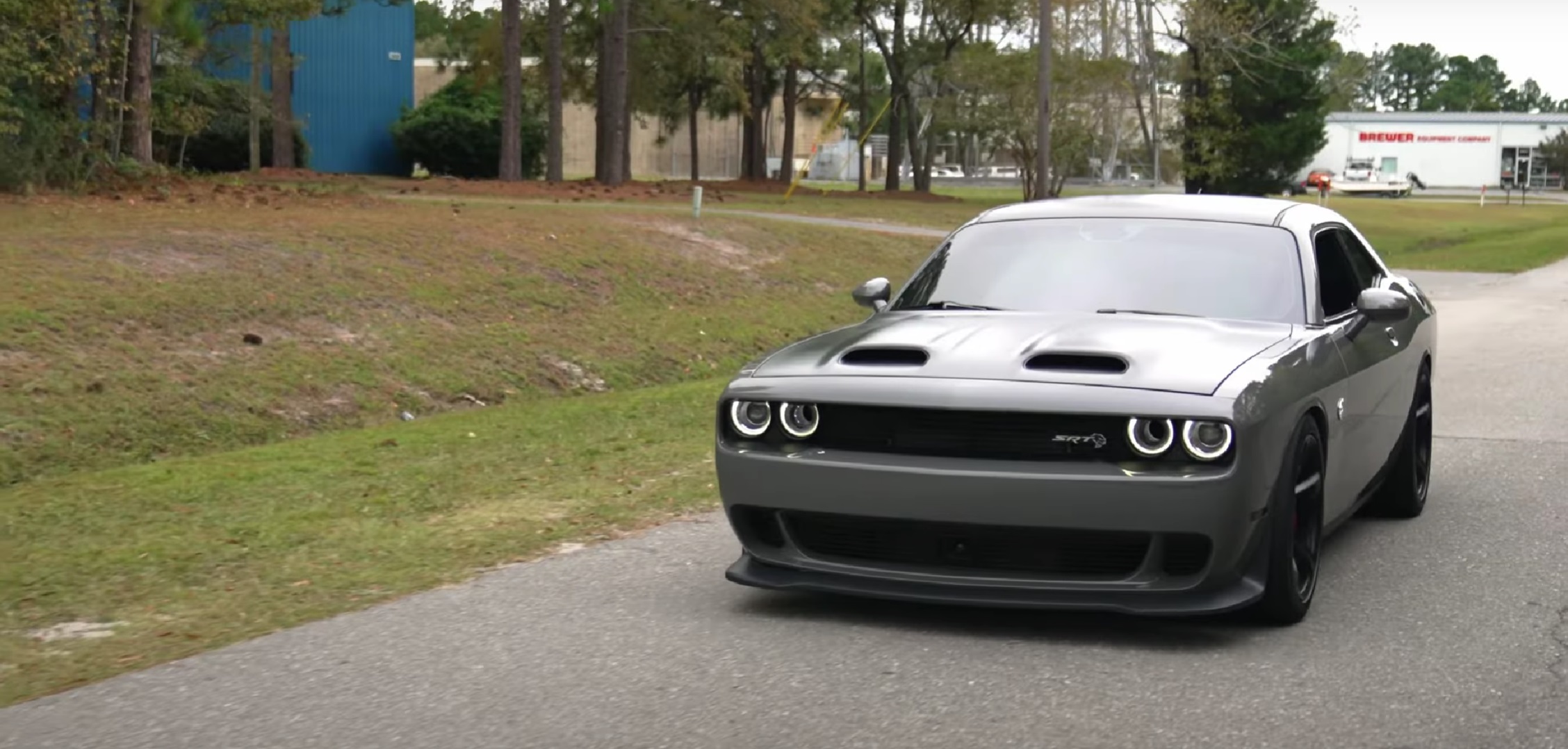
That's what we're answering today. Our subject is Kevin's 2019 Dodge Challenger SRT Hellcat which operates on 93 octane. Up first we're starting with the following combination that Metco Motorsports 2.85 upper supercharger pulley, Kong Performance ported supercharger snout, Kong Performance 108mm throttle body, and Corsa intake system.
Normally we use a JLT Performance air intake system but in this case Kevin wanted to reuse his existing Corsa intake system until he goes stage three. It won't perform nearly as well as our preferred JLT but it'll work fine for comparison purposes.
Now let's get our baseline dyno pulls in current conditions.
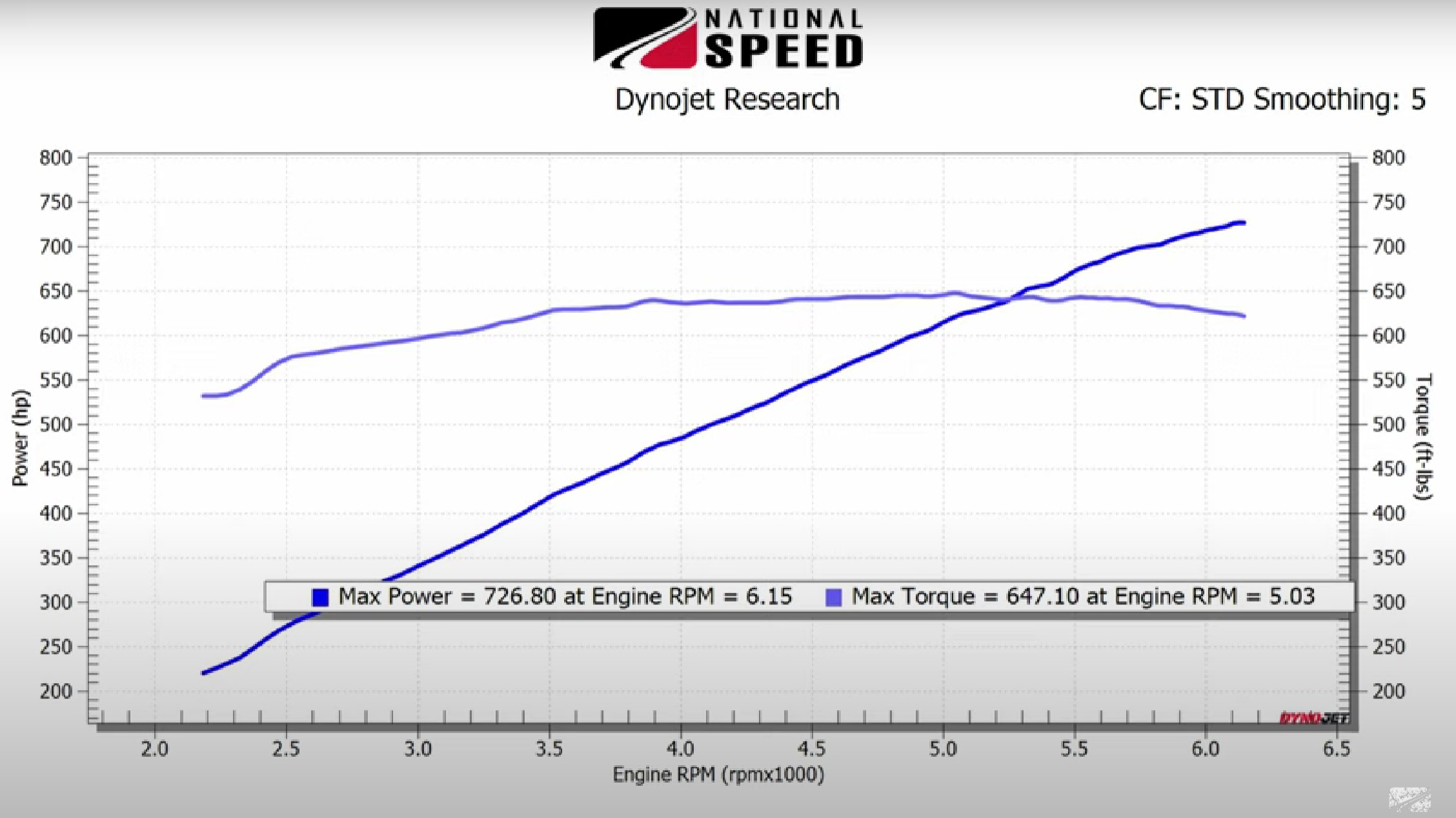
Our baselines come in at 726.80whp and 647.10 pound feet of torque now that's obviously significantly lower than we normally see with this package in fact that's 80 wheel horsepower less than this car did just a couple months ago over the exact same combination so what changed?
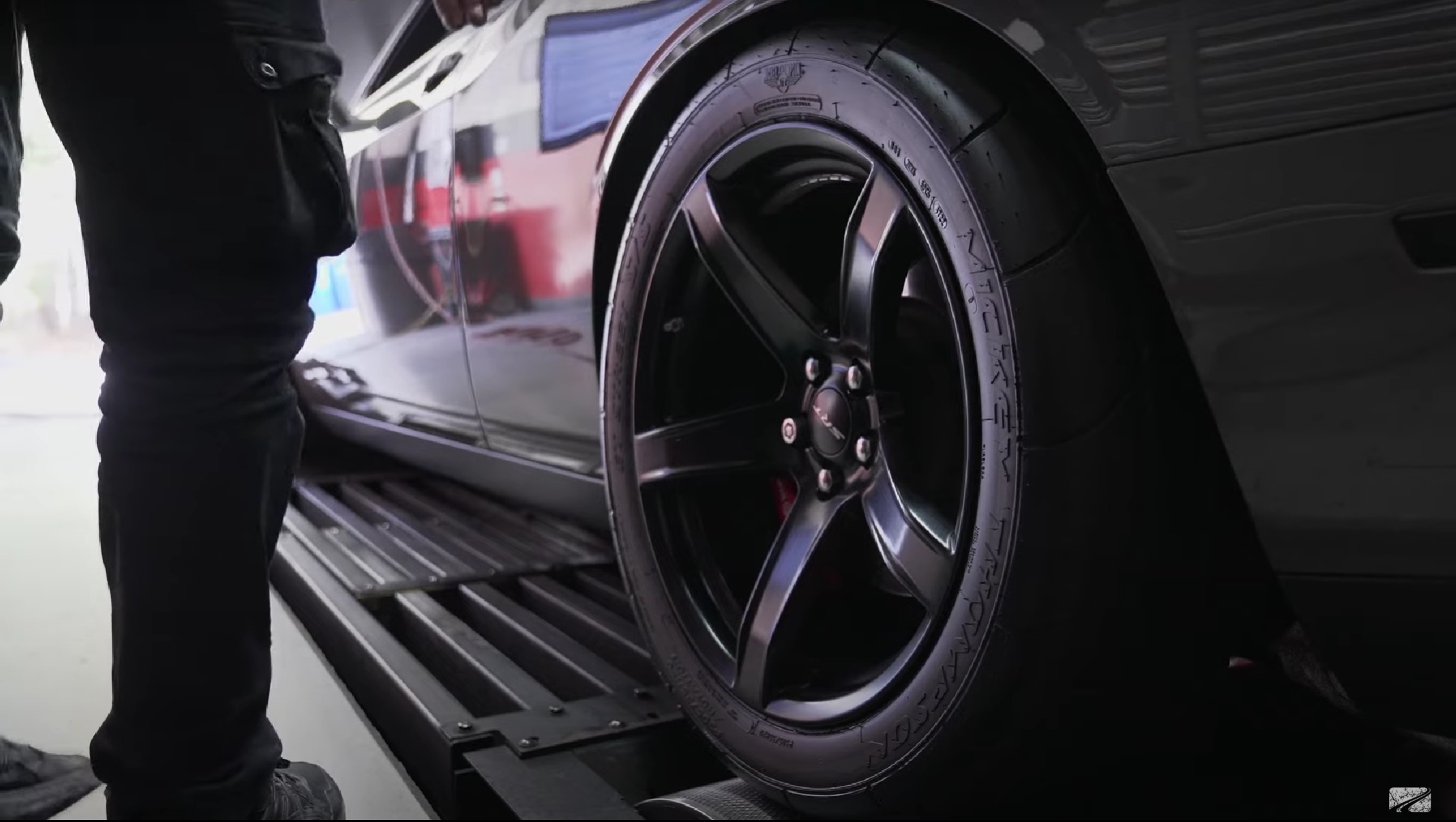
It's all drag radials and as we've covered in another video (here) this has an enormous impact on your dyno readings, but even though the power is reporting lower this is still perfectly useful for comparison purposes.
Have a look at the difference between the stock and ported bearing plate.
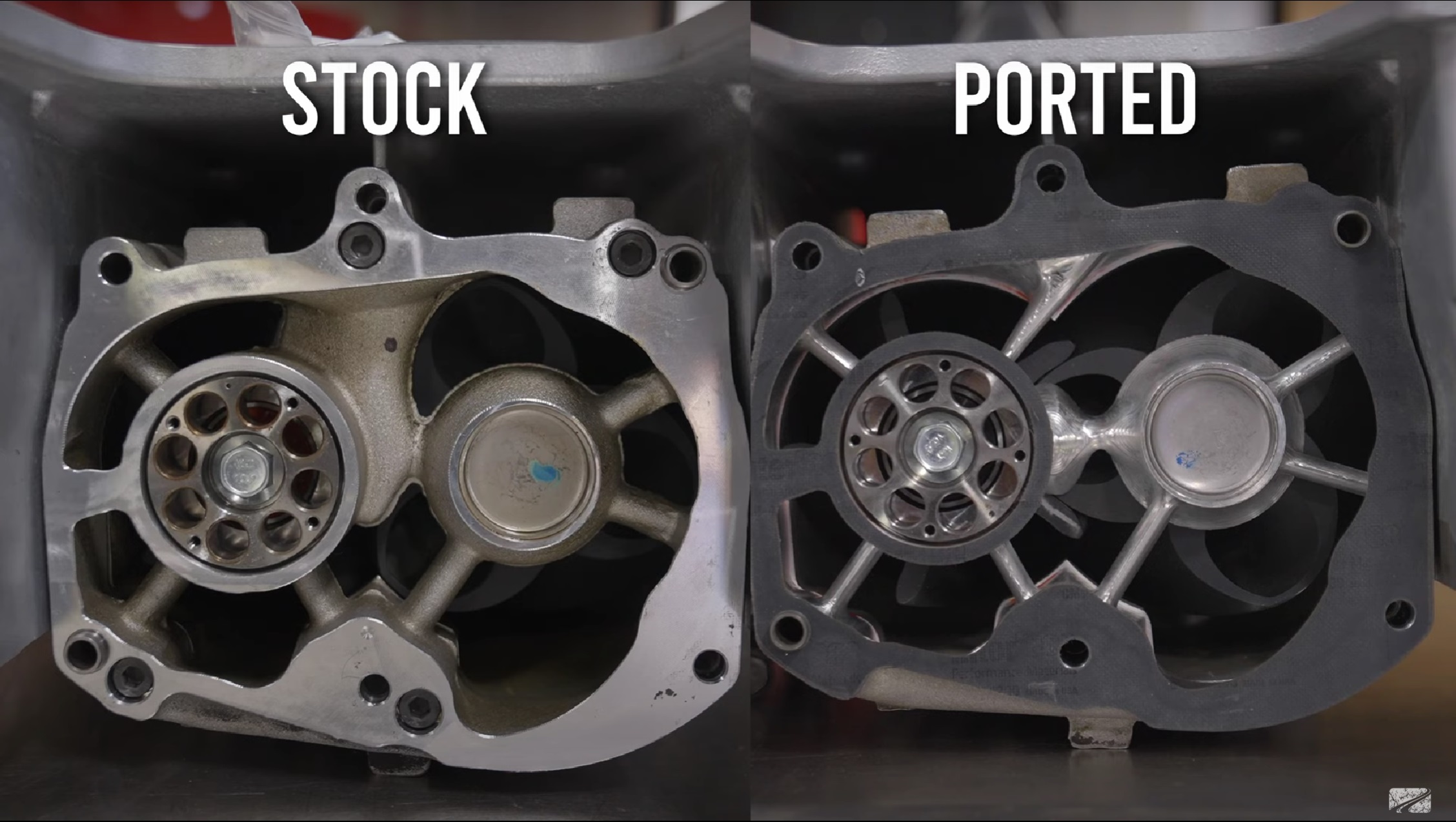
See how much more of the supercharger rotors you can see on the ported version? That equates to additional airflow. Up next Alex installs our test supercharger that's received a ported bearing plate from Kong Performance.
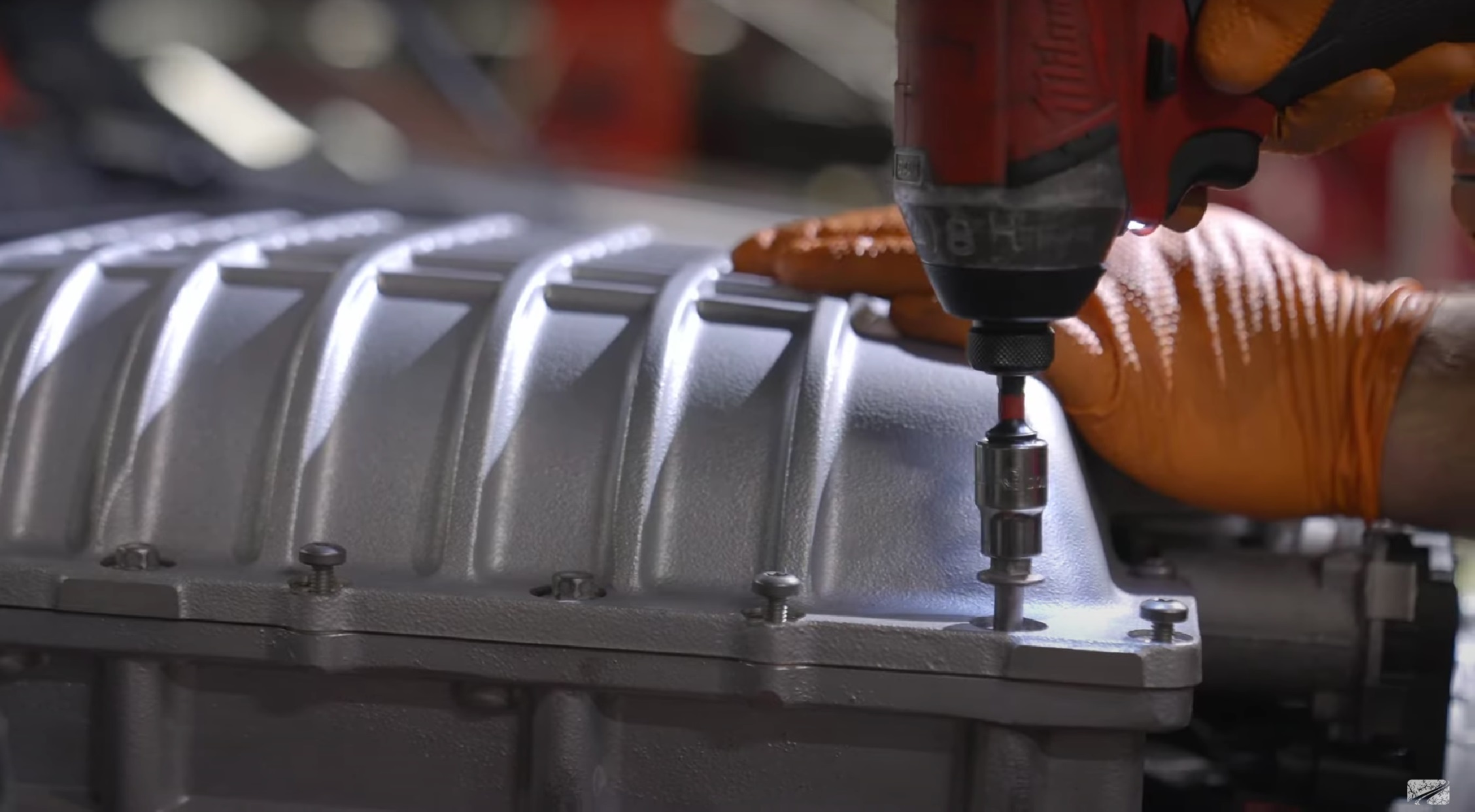
Now with no other change in setup let's see the results and unpack the data here.
The first thing that jumps out considerable loss up until about 5,000 RPM and then the gains ramp in. New peak output is 751.67whp and 650.87 pound-feet of torque as Peak gains of 24.87 wheel horsepower and 3.77 pound-feet of torque over just the ported snout and throttle body and not to mention maximum losses of 41.65 wheel horsepower and 49.67 pound-feet of torque at 2600 RPM.
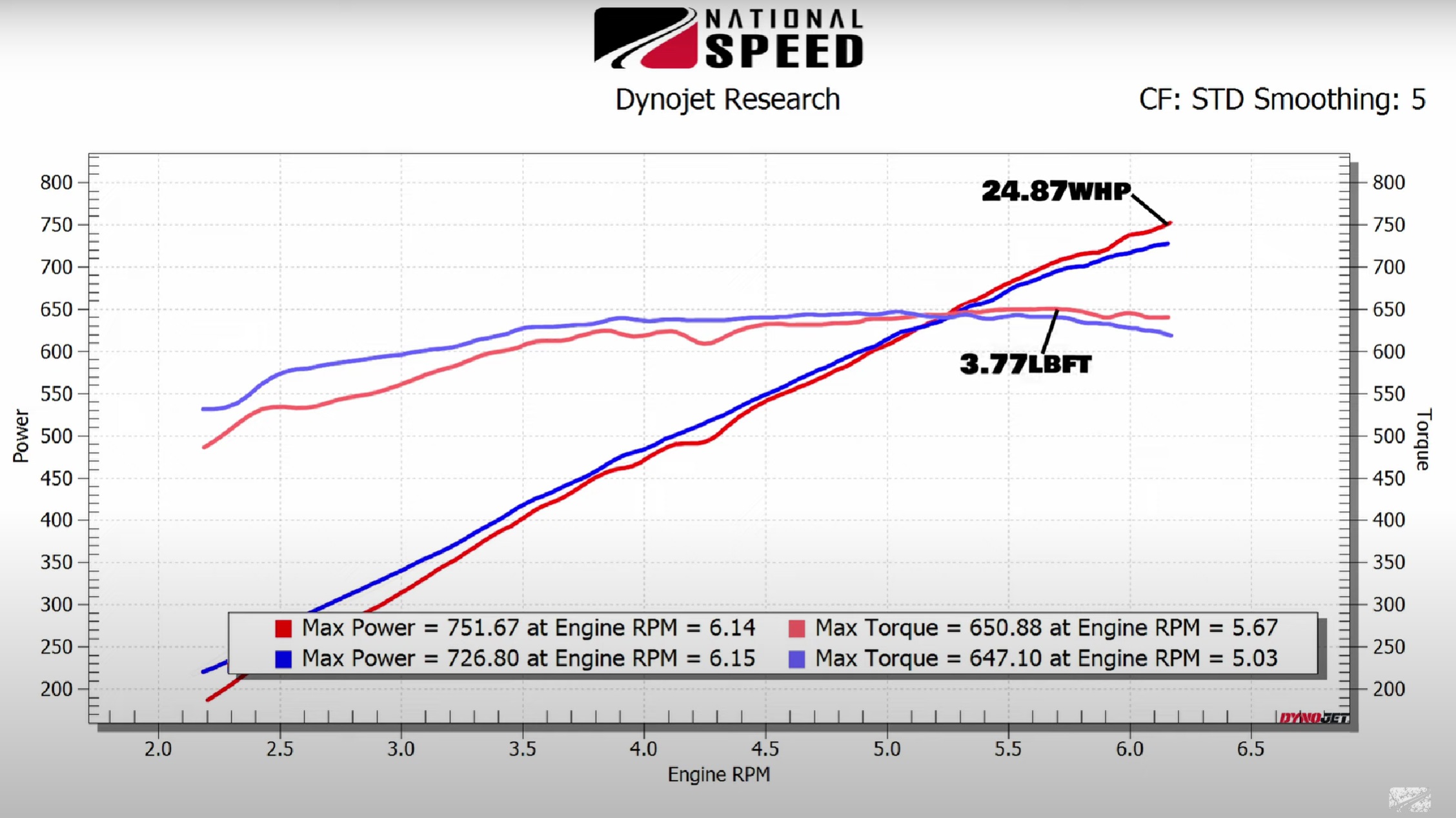
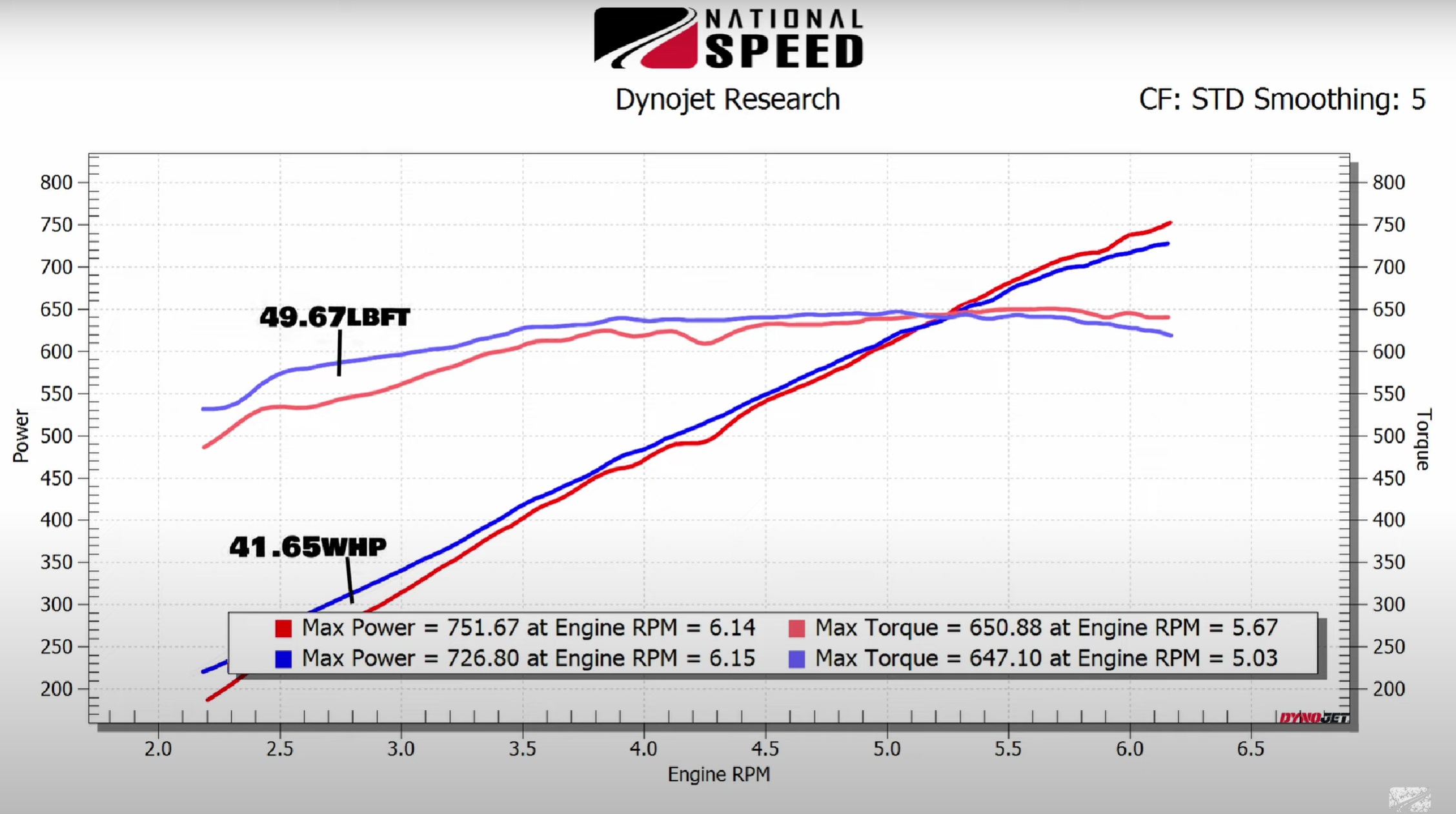
One thing to note is that no tuning revisions were made during this comparison so we would be able to offset some of these losses down low with a little bit more ignition timing, but we wanted to show the difference in airflow alone. So what's going on here? Well, the answer is not just boost pressure but how the delivery of that boost pressure has been altered.
So, let's compare boost pressure and engine RPM as we step through this data. Remember that Hellcats produce 11.6 PSI in factory form. At 3,000 RPM, the ported snout produces 14.21 PSI, while the full port produced 12.43 PSI. Nearly 2 PSI less for the full port. At 4,500 RPM the ported snout produced 14.79 PSI, while the full port produced 13.92 PSI. Nearly 1 PSI less for the full port. And at 6,000 RPM the ported snout produced 15.81 PSI while the full port produced 15.95 PSI.
Now remember when we said that less restriction doesn't always translate to more airflow well that's what's going on down low here. With a pump gas-safe pulley ratio, the supercharger simply isn't moving enough air to take advantage of the full port until the engine starts winding up and then the gains start ramping in. But with stock Redline shift points, you're only recognizing those gains for a split second before you shift to the next gear.
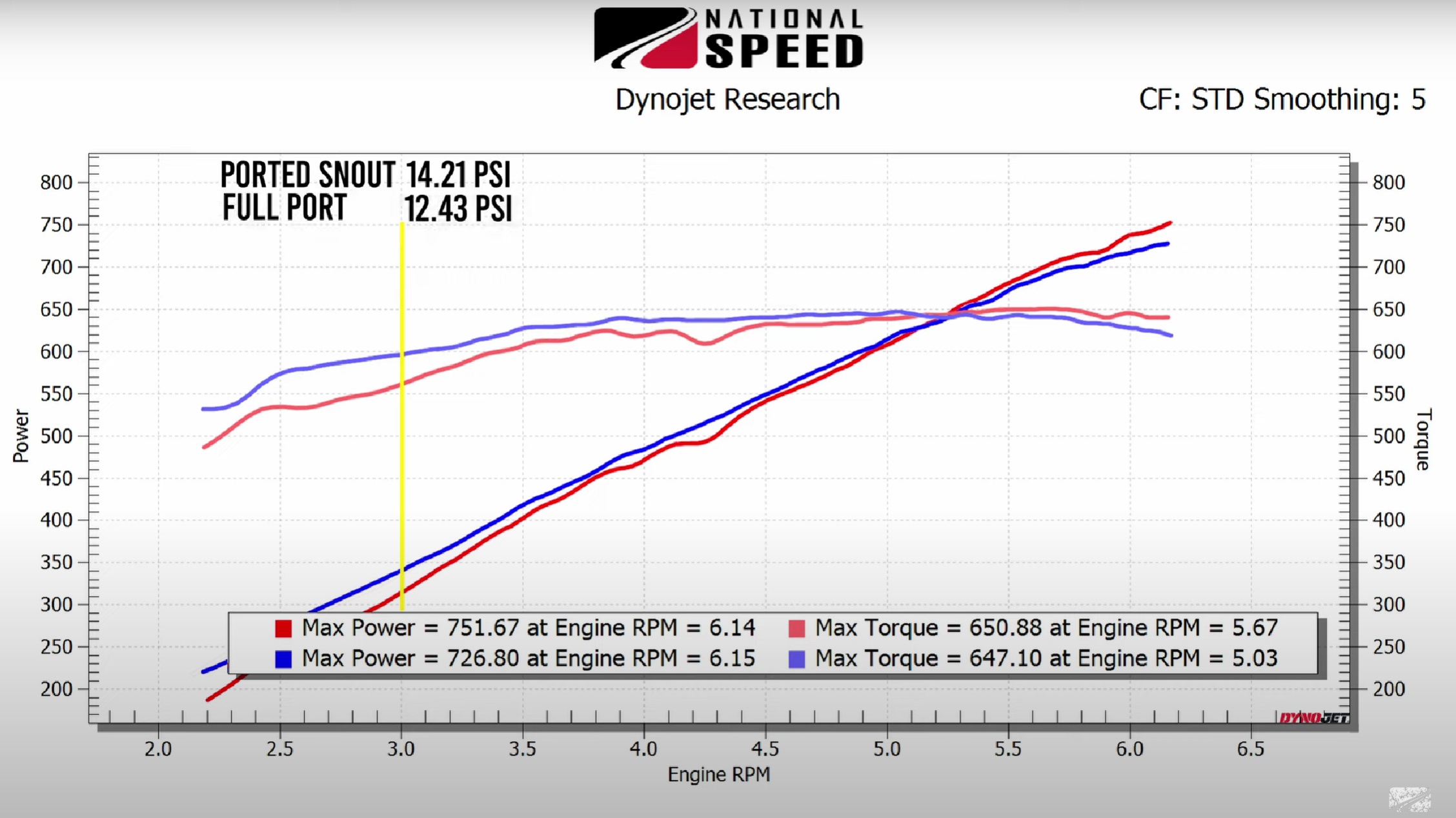
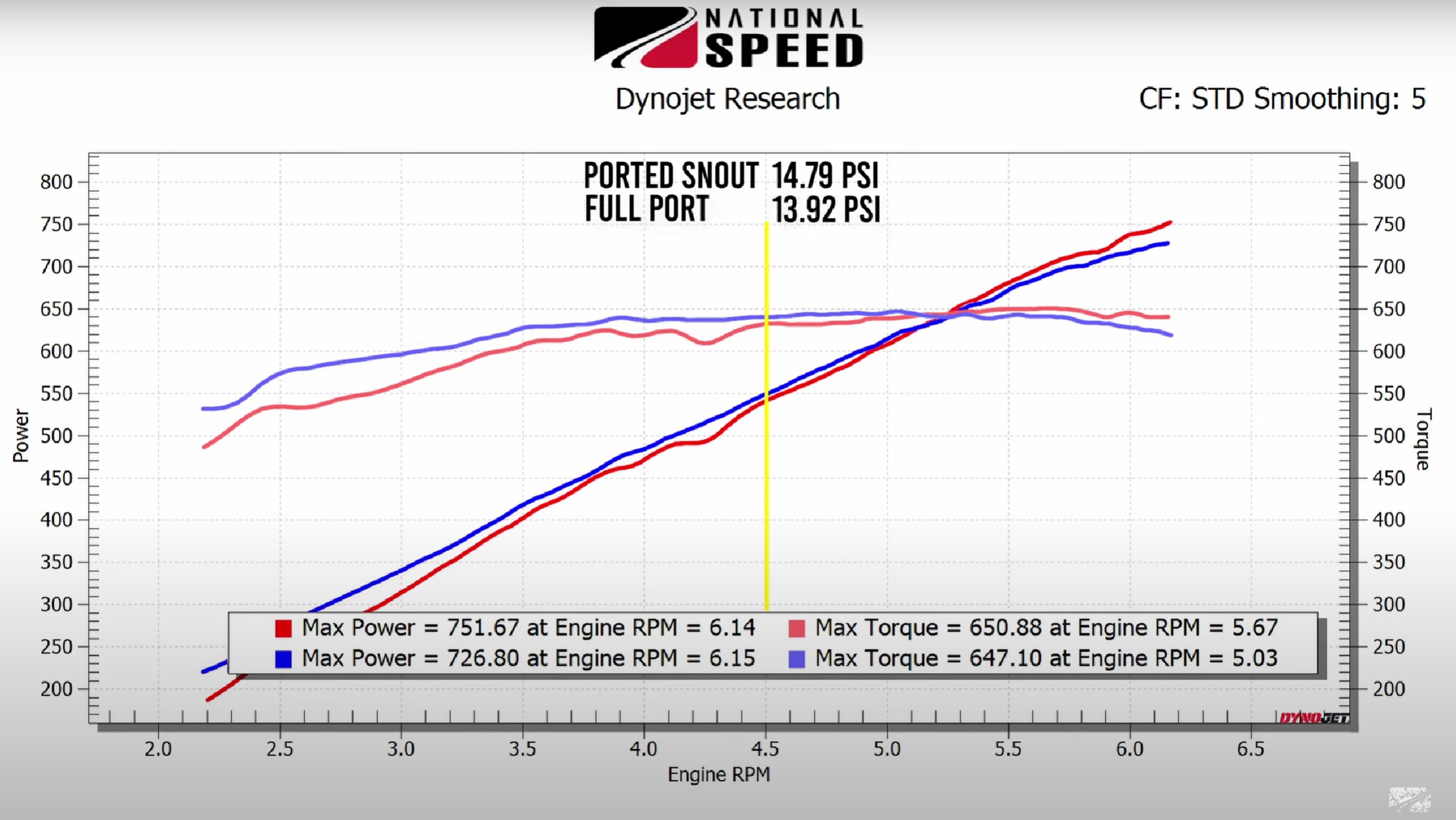
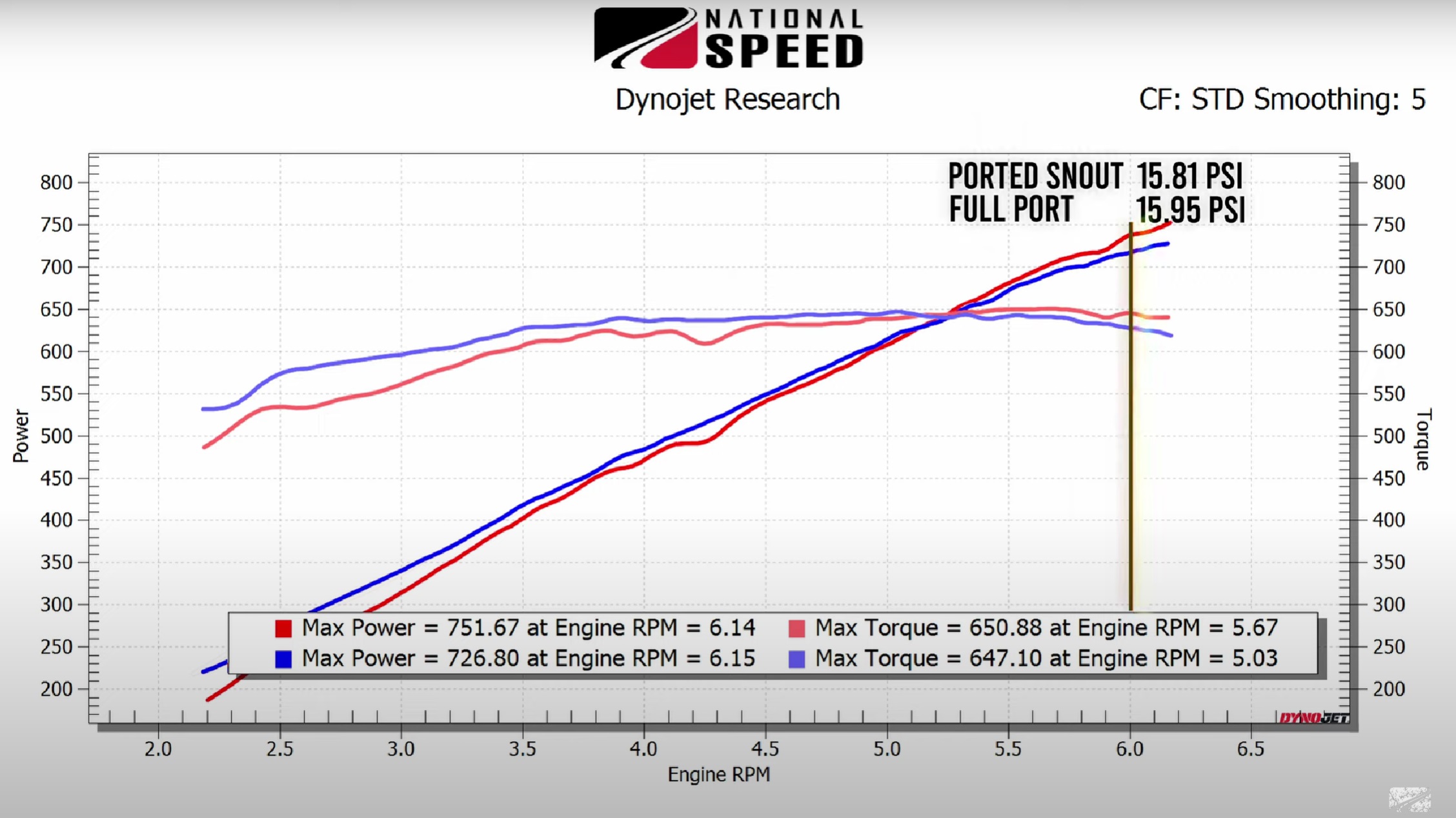
However, check out what happens when you increase engine speed to 6,500 RPM. That's starting to show up. Power output jumps big time to 771.31 wheel horsepower for the full port and 740.59 wheel horsepower for the ported snout and throttle body alone. At this RPM that's a significant difference of 36.72 wheel horsepower just by spinning the engine a bit faster and allowing that airflow.
So if you’re on pump gas, a ported snout and throttle body alone is the clear winner and for daily drivers this is a good way to go. However, those more interested in drag racing, half mile events, or trips to Mexico with a higher red line and shift points, the gains start to make a lot of sense. And frankly, knocking a little bit of power out down low can result in a more usable power band, unless you've got all the traction modifications.
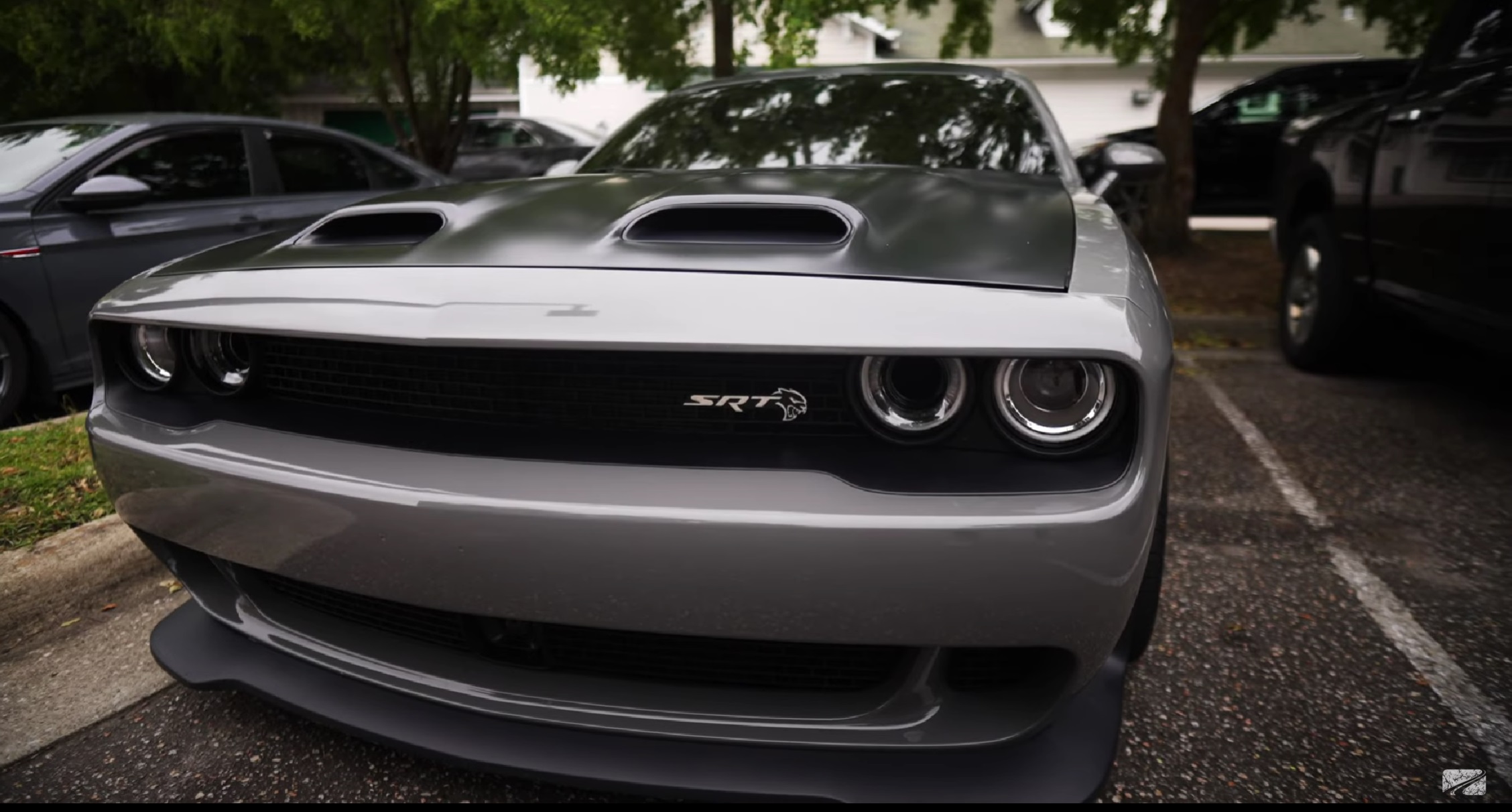
In conclusion, for a pump gas Hellcat if you want the broadest power band possible stick with the ported sound throttle body, and if you're looking for optimal straight-line performance the full port is definitely worth considering but only if you increase your red line and your shift points take advantage of the power.
As always, if you have any questions at all we're happy to chat.

